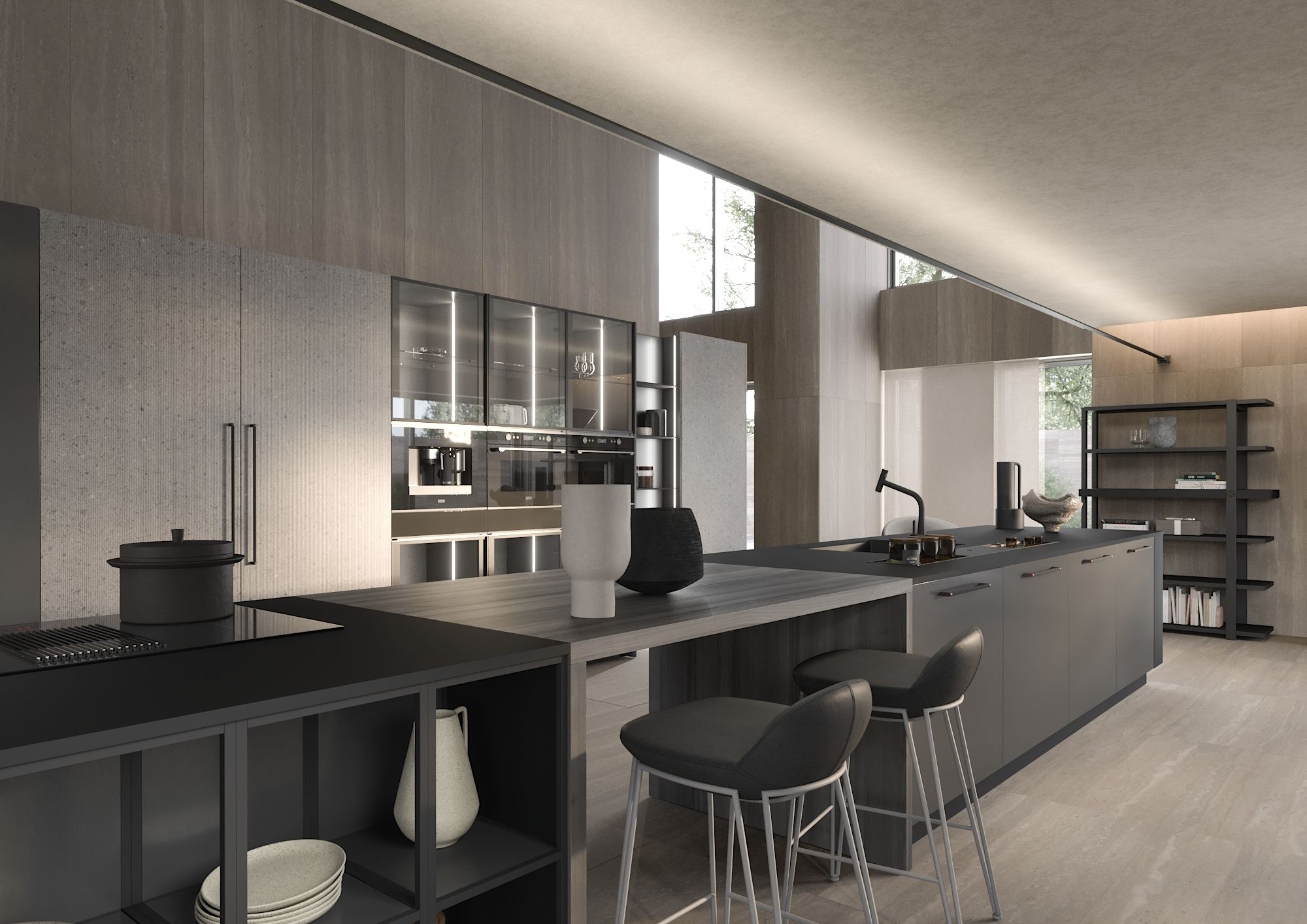
Complete guide to kitchen stools: find the right model for you
A stool is not merely a practical object, but rather a design element that enhances and adds value to the kitchen. This piece of furniture reflects the evolution of modern spaces, finding its place in environments where food preparation and socializing converge. For this reason, the challenge lies in striking the right balance between ergonomics and aesthetic consistency to enrich the home’s harmony and elevate the domestic experience.
Table of contents
Types of stools
The first consideration is a purely dimensional one and directly depends on the kitchen’s architectural layout. The height of the seat must be proportionate to the height of the surface it will accompany, in order to guarantee correct posture and adequate comfort. As with chairs, a distance of approximately 30 cm between the bottom edge of the countertop and the seat ensures enough legroom. There are mainly three categories of stool:
- Bar stool: the tallest option, ideal for raised counters or two-level islands (seat height around 70-80 cm).
- Tall stool: the most common solution for islands, peninsulas, or snack counters (seat height around 60 cm).
- Low stool: suitable for lower tables or various seating positions in the living area (around 45-50 cm), offering a versatile and easily movable solution.
Choosing the style
Once the type is defined, style selection sets the tone for the kitchen’s overall atmosphere. It can either foster visual harmony or create a standout accent that draws the eye. This decision reflects a clear design vision for the space.
There are three main stylistic directions. One can choose a unique, standout stool with bold colors or sculptural shapes. Alternatively, one may opt for material consistency, using finishes that match the island or countertop for a sense of visual continuity. Finally, matching the stools to other seating elements, such as the dining chairs, helps create cohesion between different functional zones.
Customizing the structure
Customization is the key to creating a unique piece that reflects daily habits. Choosing the type of base, a fixed or swiveling seat, or a specific backrest design all contribute to shaping a kitchen tailored to one's lifestyle.
1-leg or 4-leg base
The base of a stool determines both its stability and visual impact, strongly influencing the overall style. A four-legged base provides solidity and a sense of familiarity, offering stable support with a contemporary aesthetic.
Conversely, a single-leg base gives the kitchen a sense of lightness, freeing up the space below and simplifying cleaning. This type of base is often paired with additional features such as adjustable height and seat rotation.
Fixed or swivel seat
The seat’s functionality is a crucial detail that directly affects the dynamic use of the stool. A fixed frame defines the position, contributing to a sense of order in the room.
In contrast, a swiveling frame represents a versatile solution. The rotation mechanism promotes interaction and conviviality, allowing the user to easily turn toward the work surface or living area. Height adjustment also allows accommodation of various statures or non-standard counter heights, ensuring maximum comfort for everyone.
Backrest
The backrest significantly impacts the comfort level of a stool and comes in several forms, depending on the need for support or the desire for a lighter visual effect.
- A high backrest makes the stool resemble a chair, providing full back support and encouraging extended sitting.
- A low or minimal backrest offers subtle support while maintaining a sleek and elegant profile.
- A backless stool is the most minimalist option. Perfect for quick use, it provides maximum visual lightness and allows the stool to be completely tucked under the island or counter.
Footrests and armrests
Details like footrests and armrests play a fundamental role in ergonomic care. A footrest is essential for any tall stool: it provides leg support, evenly distributes weight, and ensures a stable and comfortable seat for extended periods.
Armrests, while less common, indicate a direct focus on comfort. They transform the stool into a high-backed armchair, ideal for islands or peninsulas that double as main dining tables. This option elevates the seating to a central role within the space.
Conclusion
Choosing the right stool means orchestrating a balance between ergonomics, style, and customization. Every decision—from height to base, from material to backrest—helps create an object that is not only functional but fully expresses your personality without compromise.
Berloni embodies this philosophy in every Atelier design experience, because we understand the importance of even the smallest details.
Book an appointment to begin a true design journey: Berloni designers will be delighted to guide you through a project meant to be authentically lived.
Explore the Berloni Catalogue and find out how to create your kitchen.
